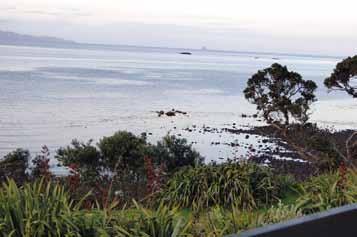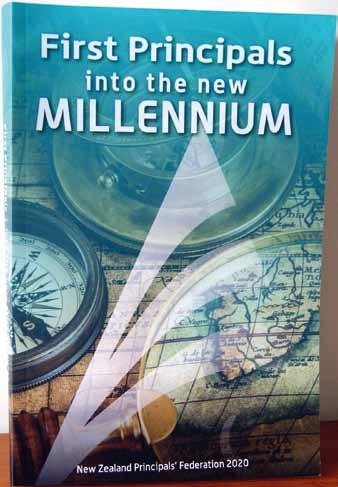Aotea – Great Barrier Island – School life with a difference Liz Hawes
20
Editor
You quickly run out of superlatives when describing Aotea Great Barrier Island. It is a place of exquisite beauty to anyone who craves peace and tranquility and yearns to escape the harsh city sounds. Located in the outer Hauraki Gulf, it offers few perceptible intrusions bar the gentle lapping of the sea and the many and varied songs of its profligate bird population. Threatened species such as the kaka, the banded rail, the brown teal duck and New Zealand dotterel make Aotea their home, alongside the more common oyster catcher, tui, pukeko, kereru, blue penguin, petrel and gannet. It helps that Aotea has few predators and with help from the Department of Conservation (DOC), who control two-thirds of the Island’s bush covered
main airport) and at the northern end, Port Fitzroy and Okiwi. A few working sheep and beef farms dot the landscape along with the manuka and bush honey producers. Aotea is accessible by (small) plane, ferry or barge. These are also the means by which food, freight and mail arrives on the island. There are three general stores, but if you are expecting supermarkets, you will be deeply disappointed. Stores are located in Tryphena, Claris and Fitzroy, the main island hubs. You can also find the medical centre, pharmacy, police, fire brigade, and garages at Claris. Cafes and restaurants are not plentiful, but some have wonderful names, such as My Fat Puku, The Currach (Irish Pub), Swallow (hamburger bar), Stray Possum
Here's an example from the balcony of our digs!
President Perry Rush takes a look at what’s over the school fence. Yes, it really is Tryphena Bay
conservation park, predators are kept at low levels. The aspiration is of course to eradicate all pests, and rat-trapping is a big part of that. Aotea has not escaped kauri die back disease and DOC workers are regenerating the kauri stands. Maintaining and cutting the many walking tracks through the pristine native bush of the conservation park is another key task for DOC. The splendid rocky outcrops and beaches of Tryphena, Okupu and Whangaparapara on the west coast, contrast with the sweeping golden sandy beaches of Medlands, Kaitoke and Whangapoua in the east. It is not unusual to be entertained by the antics of Orca or Minke whales and dolphins as you sip your coffee in a Tryphena café and if the whales and dolphins aren’t performing, there’s bound to be a few kayaks and fishing boats to catch your attention. Aotea is largely uninhabited, except for the 800 or so residents who populate the southern end of the island, in the service communities of Tryphena and Claris (which boasts the Island’s
Restaurant & Bar and The Whale Boat (in deference to the colonial whaling industry of the 1800s). If you expect to order excellent local seafood, however, you may be disappointed. Despite the well-stocked local scallop beds, the rock oysters, paua, crayfish, snapper, hapuka, terakihi, kingfish and other local seafood delights are not always available to restaurants and cafes. Rather, these delicacies are more likely to have filled the quotas of Auckland based commercial fisheries, and not be available to Aotea restaurants. If you are a seafood fan, you might need to befriend a local recreational fisherman and invite yourself for dinner. There are a few things you quickly learn about Barrier life. Petrol is $3.40 a litre, milk is $5 a litre and electricity is not a given. Some families need a wet-back for hot water and coal ranges are still in use in some parts. Once the sun goes down, you are essentially in the dark. There are no road lights to guide you home at night, nor are there any traffic lights or road markings. There is a single sealed road from one end of the island to the
NZ Principal | November 2 0 2 0





